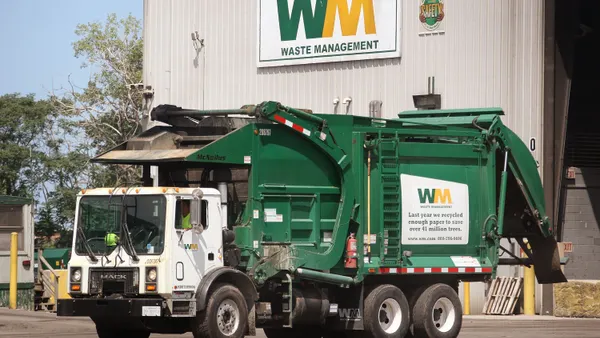Dive Brief:
- The Ocean Conservancy's International Coastal Cleanup enlisted more than 500,000 volunteers in 112 countries to collect nearly 18.4 million pounds of trash last year, according to a new report. The top five most common finds were cigarette butts, plastic bottles, plastic bottle caps, food wrappers and plastic bags.
- Trends were similar in the U.S., with cigarette butts still in the lead followed by food wrappers, plastic bottle caps, plastic bottles and beverage cans. Straws and stirrers were also common discoveries in many countries.
- According to the report, volunteers also collected enough balloons to lift a walrus and enough fishing line for nine people to drop hooks all the way to the bottom of the Mariana Trench. Pieces of plastic, foam and glass trash smaller than 2.5 centimeters were also plentiful.
Dive Insight:
Earlier this year, the Ocean Conservancy predicted that 250 million metric tons of plastic could enter oceans by 2050 if current trends aren't reversed. Full-scale cleanup campaigns facilitated by corporate or nonprofit funding are one way to tackle the issue. For the International Coastal Cleanup, volunteers collectively walked thousands of miles and covered additional ground via boat expeditions and scuba diving.
Cleanups alone won't be enough to stem the flow of product waste into the oceans and many recognize that more upstream change will be necessary. Last week, the first-ever U.N. Ocean Conference spurred lots of discussion and further highlighted the problem's scale with new research. More than 1,300 voluntary commitments were made during the event, many of them related to marine litter and plastic pollution, with plans for continued action in the future. While this problem is universally accepted it can sometimes be difficult to find common ground between the plastics industry, product manufacturers, government agencies and various environmental organizations.
In many cases the divide comes down to whether the ultimate responsibility lies with humans for choosing to litter or manufacturers for creating single-use items with limited recycling potential. Sales of items such as bottles and cans that are widely accepted in recycling programs have yet to be affected by the discussion in a serious way. Though others with more limited recycling access — bags, straws, expanded polystyrene foam take-out containers — are more prone to regulation based on current sentiments. Work is underway to rethink plastic packaging design entirely that could open up whole new possibilities on this front, but in the meantime waste from current products will still need to be managed in existing systems that may not be equipped to handle all of it.











